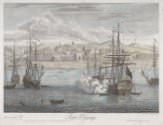The Capture of Chandernagore, March 1757
The Capture of Chandernagore, March 1757
A French trading fort had existed at Chandernagore (today’s Chandannagar), on the banks of the Hooghly River, since the late seventeenth century. By the middle of the eighteenth century, it was the administrative center for French commercial activity in Bengal and posed a financial and strategic threat to the British establishment at Calcutta, barely twenty miles downriver. When the Seven Years’ War broke out in 1756 between the two emerging global superpowers, Chandernagore was an obvious target. Its capture by British forces in March 1757 represented the first step in driving the French from Bengal and establishing British control over the province; events in Bengal in 1757 marked a key stage in the East India Company’s transformation from a trading corporation into the controlling head of a territorial empire.
Dominic Serres's painting, exhibited at the Royal Academy in 1771, shows a detachment of Royal Navy ships, under the command of Rear Admiral Charles Watson, leading the assault against the French fort. The Kent, at center, with a couple of boats under its stern, is flying Watson’s flag on the foremast. The red flag flying at the main is giving the signal to engage.
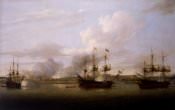
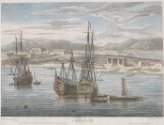
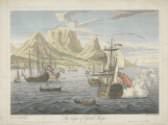

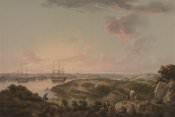
![Henry William Parish, "Madiera, South East Extremity, 10 October" in *Sketches by Captain Parish on the Voyage from England to China in 1793-4 [sic] with Lord Macartney's Embassy*, 1792, watercolor and graphite on paper. Yale Center for British Art, Paul Mellon Collection Henry William Parish, "Madiera, South East Extremity, 10 October" in *Sketches by Captain Parish on the Voyage from England to China in 1793-4 [sic] with Lord Macartney's Embassy*, 1792, watercolor and graphite on paper](https://interactive.britishart.yale.edu/sites/default/files/styles/ycba_thumbnail/public/Cat_4.21.jpg?itok=ye_OtkTo)
